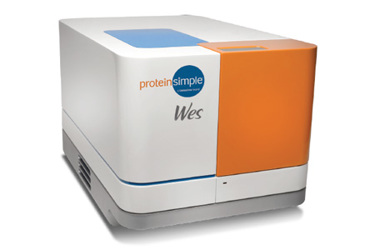Monitoring Target Engagement In Drug Discovery: Application Of Wes To The Cellular Thermal Shift Assay
By Matias Casás-Selves, Ph.D., Ontario Institute for Cancer Research, Drug Discovery Program, Toronto, ON, Canada and Daniela Ventro, Ph.D. and Susan Harrison Uy, Ph.D., ProteinSimple, San Jose, CA, USA

CETSA: The Why and How
CETSA provides researchers with the ability to measure drug–target engagement directly in the cell. Conventionally used phenotypic assays that rely on a functional readout such as changes in metabolite levels, the phosphorylation status of downstream targets or cell viability as a measure of response to a drug cannot be precisely attributed to this interaction. As a direct evaluation of the drug–target relationship, CETSA adds a layer of specificity to which the functional drug response can be attributed.
In brief, CETSA initially consists of determining the temperature required for the denaturation of the protein of interest. Once determined, constant heat stress conditions are implemented over a defined period to test a concentration gradient of a putative ligand for its target-binding efficacy. Unbound proteins will denature and precipitate, whereas ligand-bound ones will stabilize and remain in solution. The increasingly stabilized protein can be detected in the soluble fraction but requires a quantitative Western blotting approach for researchers to make meaningful conclusions.
In this application note, quantitative and reproducible CETSA data generated with ProteinSimple’s Wes™ instrument (CETSA-Wes) are presented. This assay verifies drug–target binding, and given its quantitative nature, the half maximal inhibitory concentration (IC50) is also calculated.
Get unlimited access to:
Enter your credentials below to log in. Not yet a member of Bioprocess Online? Subscribe today.
